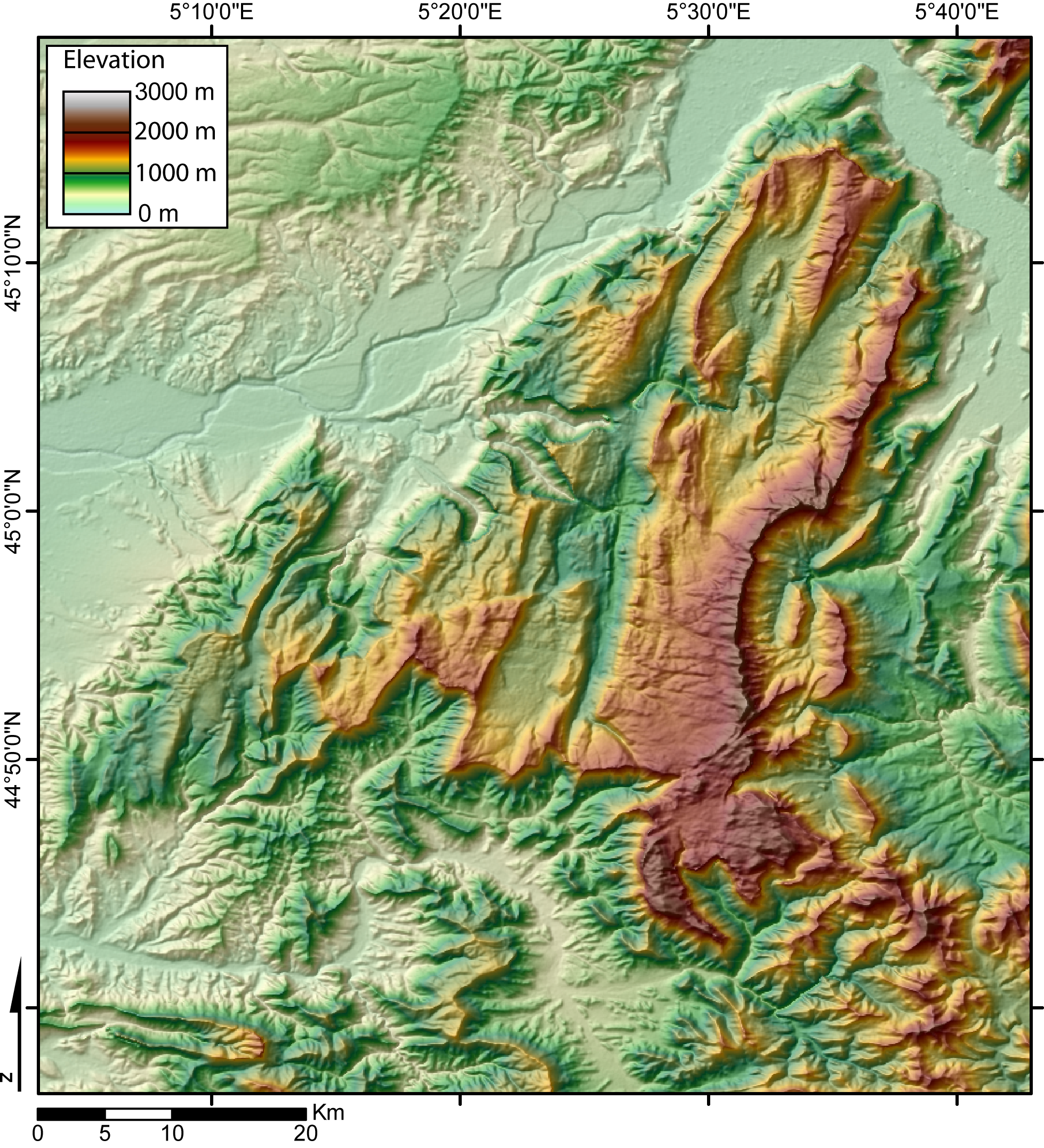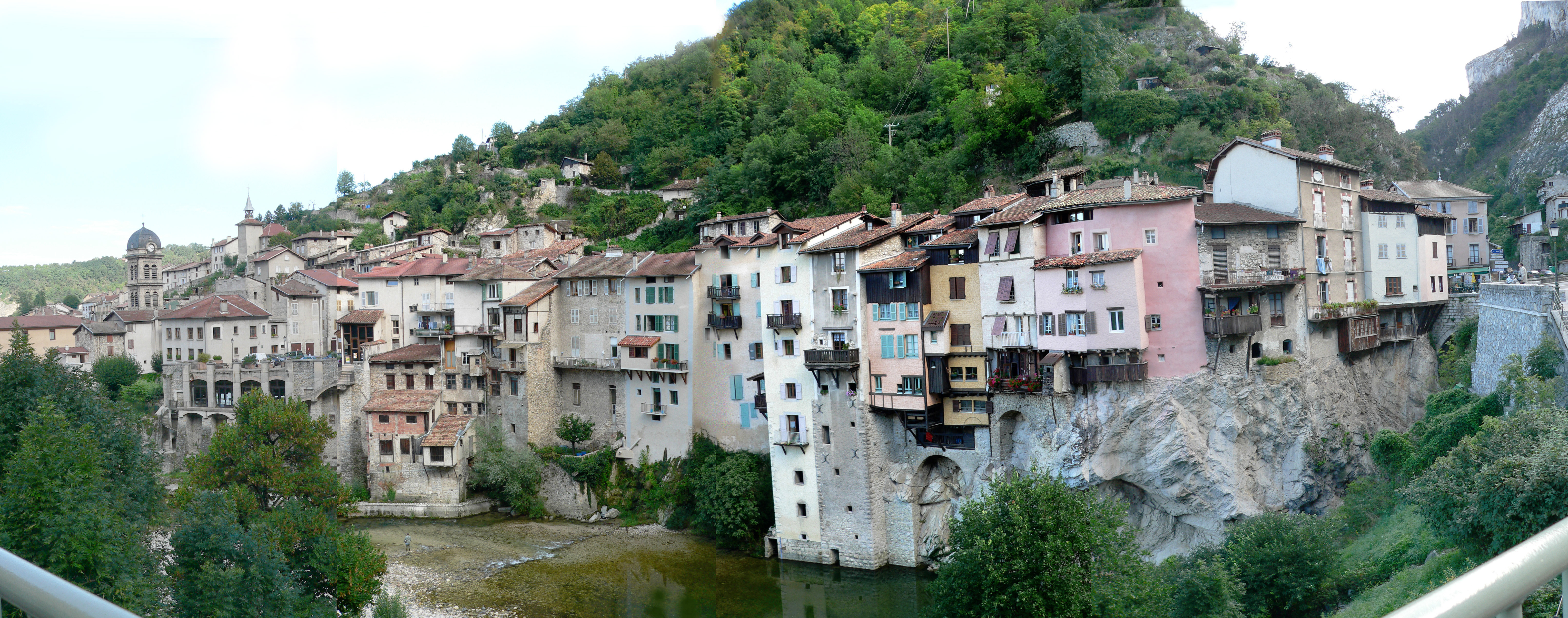|
Vassieux-en-Vercors
Vassieux-en-Vercors (, literally ''Vassieux in Vercors''; ) is a commune in the department of Drôme in southeastern France. The town is known for its assistance to the French Resistance during World War II, for which it was awarded the Ordre de la Libération. Geography The village is built on a polje of limestone and dominated by a vast Karst landscape. This polje lies on a syncline generally known as the "Plateau de Vassieux". The Plateau de Vassieux is the site of numerous other karst phenomena, such as limestone pavements and caves, which are studied and explored by local speleology groups. History Vassieux-en-Vercors is home to several prehistoric archaeological sites, and has a Museum of Prehistory which was created in May 1970 after the discovery of a flintknapping workshop. In June and July 1944, during the Second World War, the French Resistance, known as the Maquis du Vercors, staged a major uprising against the German occupation in Vercors and proclaimed th ... [...More Info...] [...Related Items...] OR: [Wikipedia] [Google] [Baidu] |
Maquis Du Vercors
The Battle of Vercors in July and August 1944 was between a rural group of the French Forces of the Interior (FFI) Maquis_(World_War_II).html" ;"title="'Maquis (World War II)">maquis''and the armed forces of Nazi Germany which had occupied France since 1940 in the Second World War. The maquis used the prominent scenic plateau known as the (Vercors Plateau) as a refuge. The maquis carried out sabotage and partisan (military), partisan operations against the Germans. After the Normandy Invasion of 6 June 1944, the leadership of a force of about 4,000 maquis declared the Free Republic of Vercors and attempted to create a conventional army to oppose the German occupation. The Allies supported the maquis with parachute drops of weapons and by supplying teams of advisors and trainers but the uprising was premature. In July 1944, up to 10,000 German soldiers invaded the massif and killed more than 600 maquisards and 200 civilians. It was Germany's largest anti-partisan operation in ... [...More Info...] [...Related Items...] OR: [Wikipedia] [Google] [Baidu] |
French Resistance
The French Resistance ( ) was a collection of groups that fought the German military administration in occupied France during World War II, Nazi occupation and the Collaboration with Nazi Germany and Fascist Italy#France, collaborationist Vichy France, Vichy regime in France during the World War II, Second World War. Resistance Clandestine cell system, cells were small groups of armed men and women (called the Maquis (World War II), Maquis in rural areas) who conducted guerrilla warfare and published Underground press, underground newspapers. They also provided first-hand intelligence information, and escape networks that helped Allies of World War II, Allied soldiers and airmen trapped behind Axis powers, Axis lines. The Resistance's men and women came from many parts of French society, including émigrés, academics, students, aristocrats, conservative Catholic Church in France, Roman Catholics (including clergy), Protestantism in France, Protestants, History of the Jews in F ... [...More Info...] [...Related Items...] OR: [Wikipedia] [Google] [Baidu] |
Vercors Massif
The Vercors massif (; ) is a mountain range in eastern France consisting of rugged plateaus and mountains straddling the ''département in France, départements'' of Isère and Drôme in the French Prealps. It lies west of the Dauphiné Alps, from which it is separated by the rivers Drac (river), Drac and Isère (river), Isère. The cliffs at the massif's eastern limit face the city of Grenoble. Background Over time, various features of the complex geography have been recognised including, the Quatre Montagnes (four mountains), the Coulmes (gorges), the Vercors Drômois (Drome Vercors), the Hauts-Plateaux (high plateaus) and, in the foothills, Royans, Gervanne, Diois, and Trièves. The massif is sometimes called the "fortress". The movement of people tends to be between the massif and the surrounding plains rather than between the various parts of the massif itself. Until the mid twentieth century, the name ''Vercors'' was used to describe only the township of La Chapelle-en ... [...More Info...] [...Related Items...] OR: [Wikipedia] [Google] [Baidu] |
Vercors Cave System
The Vercors massif (; ) is a mountain range in eastern France consisting of rugged plateaus and mountains straddling the '' départements'' of Isère and Drôme in the French Prealps. It lies west of the Dauphiné Alps, from which it is separated by the rivers Drac and Isère. The cliffs at the massif's eastern limit face the city of Grenoble. Background Over time, various features of the complex geography have been recognised including, the Quatre Montagnes (four mountains), the Coulmes (gorges), the Vercors Drômois (Drome Vercors), the Hauts-Plateaux (high plateaus) and, in the foothills, Royans, Gervanne, Diois, and Trièves. The massif is sometimes called the "fortress". The movement of people tends to be between the massif and the surrounding plains rather than between the various parts of the massif itself. Until the mid twentieth century, the name ''Vercors'' was used to describe only the township of La Chapelle-en-Vercors (with Royans), and the northern area aro ... [...More Info...] [...Related Items...] OR: [Wikipedia] [Google] [Baidu] |
Ordre De La Libération
The Order of Liberation (, ) is a French Order which was awarded to heroes of the Liberation of France during World War II. It is a worn by recipients only before the ''Légion d’Honneur'' (Legion of Honour). In the official portrait of General de Gaulle as President, he wore the grand collar of the Order and not the grand collar of the Légion d'Honneur, hence signifying the preeminence of the Order ahead of the Légion d'Honneur. Individuals (nationals and foreigners such as the Sultan of Morocco), cities and military units were awarded it upon the sole decision of De Gaulle for feats of heroism in the French Resistance, the Forces Françaises Libres and the Armée d'Afrique; and only for their deeds during World War II. To date it is the only French royal, imperial or republican chivalry order that became extinct with the death of its last member. The youngest Companion, assassinated by the Germans, was only 16 years of age. Another decoration, the '' Médaille de la R ... [...More Info...] [...Related Items...] OR: [Wikipedia] [Google] [Baidu] |
Parc Naturel Régional Du Vercors
The Vercors Regional Natural Park (French: ''Parc naturel régional du Vercors'') is a protected area of forested mountains in the Rhône-Alpes Regions of France, region of southeastern France. Geography Set upon a limestone plateau south of Grenoble, the park extends into the Main chain of the Alps#Western Alps, French Western Alps. It spans two Departments of France, departments, Drôme and Isère, and covers a total area of . The plateau's main elevation reaches while the eastern Alpine mountain ridge tops with Grand Veymont, Le Grand Veymont (2341m). The Vercors area is peppered with caves. During World War II, it served as a safe and defensible position for the French Resistance: ''Forteresse de la Résistance''. The area now contains around three hundred monuments to the Resistance, including a memorial center and the preserved remains of a destroyed village. In modern times, Vercors has become a popular tourist destination frequented for skiing, hiking and spelunking. ... [...More Info...] [...Related Items...] OR: [Wikipedia] [Google] [Baidu] |
Companions Of The Liberation
A Companion of Liberation () is a member of the Order of the Liberation, created on November 16, 1940, by General de Gaulle as "leader of the Free French" to "reward the people or military and civilian communities who have distinguished themselves in the work of liberation of France and its empire". Description Five communes (Paris, Île de Sein, Nantes, Grenoble and Vassieux-en-Vercors), 18 combat units including two warships, and 1,038 people count among the Companions of the Liberation during the signing of the decree of foreclosure of the order of the Liberation. Of the 1,038 companions, 271 were appointed posthumously. The youngest, who died at 14, is Mathurin Henrio. Seventy-three foreigners or French-born foreigners, of 25 different nationalities, were made companions. Among the most famous are Dwight D. Eisenhower, King Mohammed V of Morocco, King George VI and Winston Churchill, decorated after Order foreclosure. On October 12, 2021, Florence Parly, annou ... [...More Info...] [...Related Items...] OR: [Wikipedia] [Google] [Baidu] |
Limestone
Limestone is a type of carbonate rock, carbonate sedimentary rock which is the main source of the material Lime (material), lime. It is composed mostly of the minerals calcite and aragonite, which are different Polymorphism (materials science), crystal forms of calcium carbonate . Limestone forms when these minerals Precipitation (chemistry), precipitate out of water containing dissolved calcium. This can take place through both biological and nonbiological processes, though biological processes, such as the accumulation of corals and shells in the sea, have likely been more important for the last 540 million years. Limestone often contains fossils which provide scientists with information on ancient environments and on the evolution of life. About 20% to 25% of sedimentary rock is carbonate rock, and most of this is limestone. The remaining carbonate rock is mostly Dolomite (rock), dolomite, a closely related rock, which contains a high percentage of the mineral Dolomite (mine ... [...More Info...] [...Related Items...] OR: [Wikipedia] [Google] [Baidu] |
Agriculture
Agriculture encompasses crop and livestock production, aquaculture, and forestry for food and non-food products. Agriculture was a key factor in the rise of sedentary human civilization, whereby farming of domesticated species created food surpluses that enabled people to live in the cities. While humans started gathering grains at least 105,000 years ago, nascent farmers only began planting them around 11,500 years ago. Sheep, goats, pigs, and cattle were domesticated around 10,000 years ago. Plants were independently cultivated in at least 11 regions of the world. In the 20th century, industrial agriculture based on large-scale monocultures came to dominate agricultural output. , small farms produce about one-third of the world's food, but large farms are prevalent. The largest 1% of farms in the world are greater than and operate more than 70% of the world's farmland. Nearly 40% of agricultural land is found on farms larger than . However, five of every six farm ... [...More Info...] [...Related Items...] OR: [Wikipedia] [Google] [Baidu] |
Communes Of Drôme
A commune is an alternative term for an intentional community. Commune or comună or comune or other derivations may also refer to: Administrative-territorial entities * Commune (administrative division), a municipality or township ** Communes of Algeria ** Communes of Angola ** Communes of Belgium ** Communes of Benin ** Communes of Burundi ** Communes of Chile ** Communes of the Democratic Republic of the Congo ** Communes of France ** Communes of Italy, called ''comune'' ** Communes of Luxembourg ** Communes of Moldova, called ''comună'' ** Communes of Niger ** Communes of Romania, called ''comună'' ** Communes of Switzerland ** Commune-level subdivisions (Vietnam) *** Commune (Vietnam) *** Commune-level town (Vietnam) ** People's commune, highest of three administrative levels in rural China, 1958 to 1983 Government and military/defense * Agricultural commune, intentional community based on agricultural labor * Commune (rebellion), a synonym for uprising or revolutionary ... [...More Info...] [...Related Items...] OR: [Wikipedia] [Google] [Baidu] |





